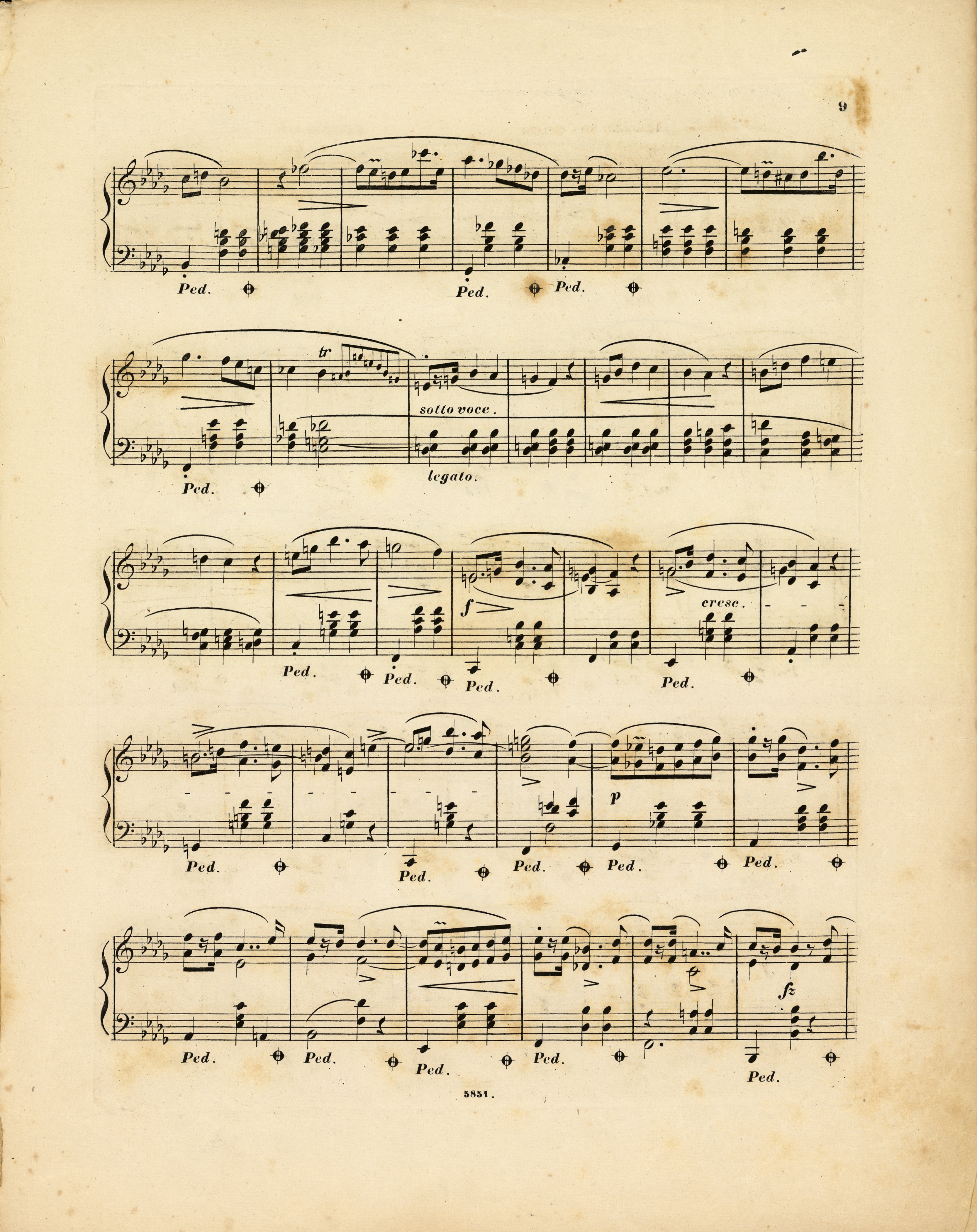



There are two main arguments supporting the hypothesis that Chopin could have committed a mistake by leaving the 1st note in the bar without a  resulting in
resulting in
g2:
- analogy with the three previous phrases, in which the 1st R.H. note always (both in C
 and B
and B ) constitutes the interval of a major ninth with the bass;
) constitutes the interval of a major ninth with the bass; - Chopin's hesitation, quite frequent, as to the presence of the last accidental in the key signature, in this case the
 to g
to g . The fact that Chopin was uncertain whether it was g or g
. The fact that Chopin was uncertain whether it was g or g that required an accidental is proven by a
that required an accidental is proven by a  to g
to g 2, put twice, in bars 27 and 35. Therefore, if Chopin provided the g
2, put twice, in bars 27 and 35. Therefore, if Chopin provided the g 2 note with a flat, which was actually totally unnecessary, it is logical to assume that a respective note without a
2 note with a flat, which was actually totally unnecessary, it is logical to assume that a respective note without a  is to be interpreted as g2.
is to be interpreted as g2.
Due to the above, in the main text we suggest a variant solution with affinity to g2.
A natural was added in GE2, probably on the basis of a comparison with bar 31.
Compare the passage in the sources »
category imprint: Differences between sources; Editorial revisions
issues: GE revisions, Omission of current key accidentals, Last key signature sign
notation: Pitch

